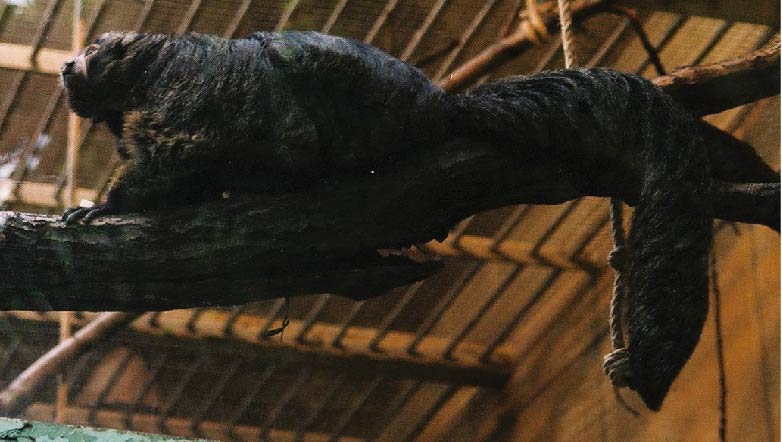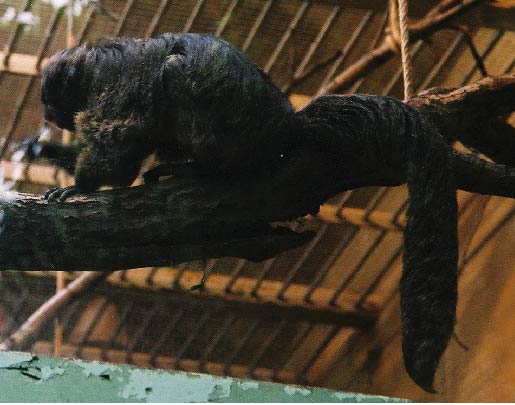The average body mass of the adult monk saki is about 2 kilograms. The nostrils of this species face laterally. The tail of the monk saki is not prehensile. The facial hair color is sexually dimorphic (Kinzey, 1997). The monk saki has robust incisors and canines that it uses to break through the tough pericarp of fruit (Fleagle, 1988).
RANGE:
The monk saki is found in the countries of Bolivia, Brazil, Colombia, Ecuador, and Peru. This species is found in primary forests in the middle to upper levels of the canopy (Soini, 1986).

